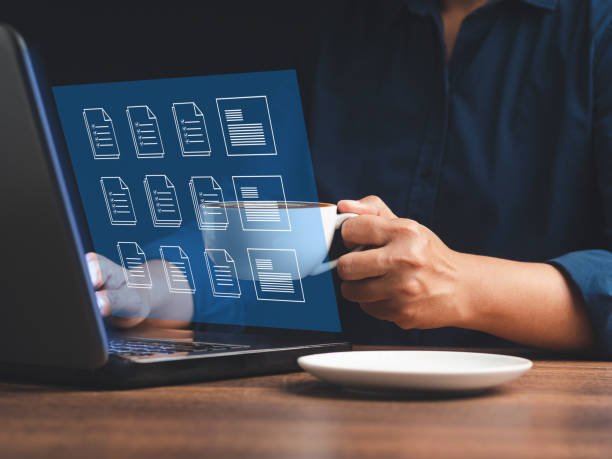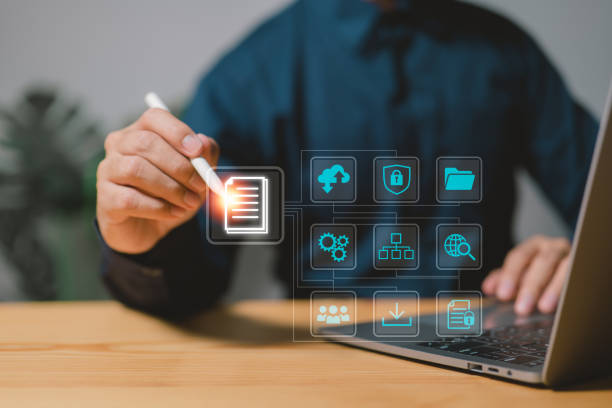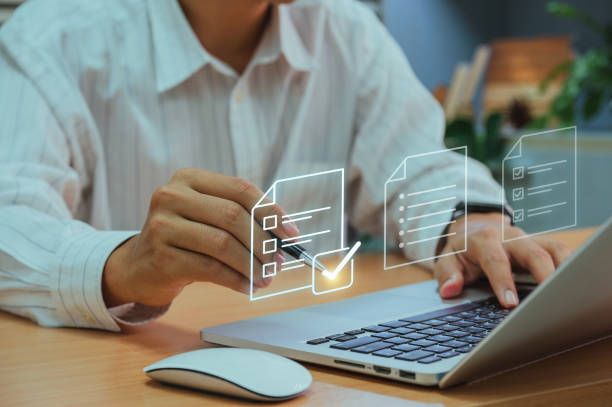What is On-Page SEO and Why is it Important?
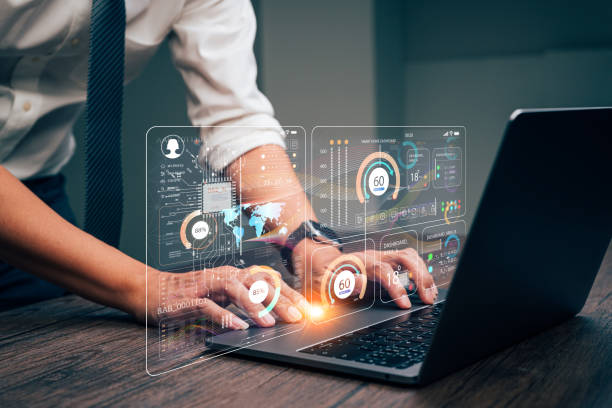
On-Page SEO (On-Page SEO) is a set of actions performed to optimize web pages to improve their ranking in search results.
These actions include optimizing content, title tags, meta descriptions, URL structure, and more.
The importance of On-Page SEO lies in its ability to help search engines better understand page content and display it to relevant users.
In fact, On-Page SEO forms the foundation and basis of any successful SEO strategy. Without adhering to On-Page SEO principles, efforts to achieve high rankings on Google will be futile.
A strong On-Page SEO strategy helps search engines like Google understand your website’s content, structure, and relevance.
This understanding leads to higher rankings in Search Engine Results Pages (SERPs) and, consequently, increased organic traffic.
Don’t forget that On-Page SEO is only one part of SEO; alongside Off-Page SEO and Technical SEO, it forms a comprehensive SEO strategy.
However, focusing on On-Page SEO is an excellent starting point for improving your online visibility. On-Page SEO establishes a solid foundation for your other SEO efforts.
With an internally optimized website, external link building and other SEO techniques will be more effective.
Furthermore, On-Page SEO also impacts user experience.
An optimized website in terms of speed, usability, and design provides a better user experience, leading to lower bounce rates and longer dwell times on the site. Ultimately, On-Page SEO is a long-term investment.
The efforts you make today to optimize your website will show results in the long run, helping you achieve higher rankings in search results and attract more organic traffic to your website.
Does your current website build the trust that potential customers should have in your business? If the answer is no, it’s time to get your professional and impactful corporate website with Rasaweb.
✅ Fully custom design tailored to your brand identity
✅ Increased lead generation and business credibility in the eyes of customers⚡ Contact us for a free consultation!
Keyword Research and Choosing the Best for On-Page SEO
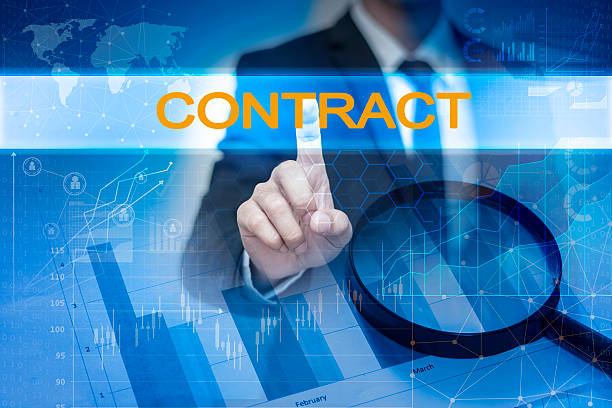
Keyword research is one of the most important steps in On-Page SEO.
Choosing the right keywords helps you create content based on your target audience’s needs and achieve a better ranking in search results.
For keyword research, you can use various tools such as Google Keyword Planner, Ahrefs, and Semrush.
When selecting keywords, you should pay attention to factors such as search volume, competition, and relevance to the content. Also, you should consider Long-Tail Keywords.
These keywords usually have lower search volume, but also less competition, and can attract more targeted traffic to your website. After you have selected your desired keywords, you should use them strategically in your content.
This includes using keywords in the page title, meta description, subheadings, main text, and image tags.
However, you should avoid excessive use of keywords (Keyword Stuffing), as this can harm your website’s ranking. You should also pay attention to synonyms and words related to your main keywords.
Using these words can help search engines better understand your content and display it to more users. Ultimately, keyword research is an ongoing process.
You should regularly review the performance of your keywords and update them as needed.
You should also pay attention to changes in user behavior and search engine algorithms and adjust your keyword strategy accordingly.
Optimizing Titles and Meta Descriptions
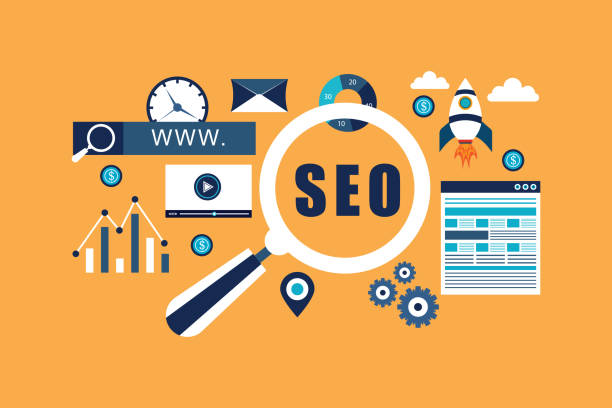
Titles and meta descriptions play a significant role in On-Page SEO.
The page title is the first thing users see in search results and should be engaging and relevant to the content.
The meta description is a summary of the page’s content and should entice users to click on your link.
The title length should be between 50 and 60 characters, and the meta description length should be between 150 and 160 characters.
The title and meta description should include the page’s main keywords and clearly explain what the page is about. Optimizing titles and meta descriptions helps search engines better understand the page’s topic and display it to relevant users.
Additionally, this increases the click-through rate (CTR) in search results.
A high click-through rate indicates that users are interested in your content, which can help improve your ranking in search results. Furthermore, titles and meta descriptions can help improve your branding.
By using an engaging and professional title and meta description, you can introduce your brand to users and gain their trust. Ultimately, optimizing titles and meta descriptions is a simple process that can significantly impact your website’s traffic and ranking.
By investing a little time and effort, you can optimize your titles and meta descriptions and achieve better results in search results.
| Element | Description | Best Practice |
|---|---|---|
| Page Title | The page title displayed in search results | Include main keyword, engaging, max 60 characters |
| Meta Description | A summary of the page content displayed in search results | Include main keyword, enticing, max 160 characters |
Content Optimization for On-Page SEO
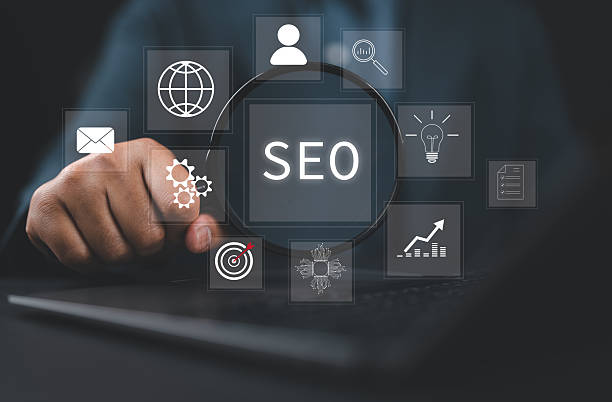
Content is King! This phrase is very common in the world of On-Page SEO and indicates the importance of content in improving your website’s ranking.
High-quality, engaging, and relevant content can attract a lot of organic traffic to your website and help improve your ranking in search results.
To optimize content for On-Page SEO, you need to pay attention to a few points.
First, your content must be unique and original.
Avoid copying others’ content, as this can harm your website’s ranking. Second, your content should be written for your target audience.
Pay attention to their needs and questions and produce content that answers them. Third, your content should be optimized for keywords.
Use your main keywords naturally in your content, but avoid excessive use of keywords. Fourth, your content must be readable and understandable.
Use short paragraphs and simple sentences, and avoid using complex words and phrases. Fifth, your content should have an appropriate structure.
Use headings and subheadings to organize your content and use images and videos to make it more engaging. Sixth, your content should be up-to-date.
Regularly update your content and add new information to it.
Is your e-commerce site ready to attract maximum customers and increase sales? Rasaweb transforms your online business with modern and efficient e-commerce website designs.
✅ Increased speed and improved SEO
✅ Excellent user experience on mobile and desktop⚡ Get a free e-commerce website design consultation from Rasaweb!
URL Structure and its Importance in On-Page SEO
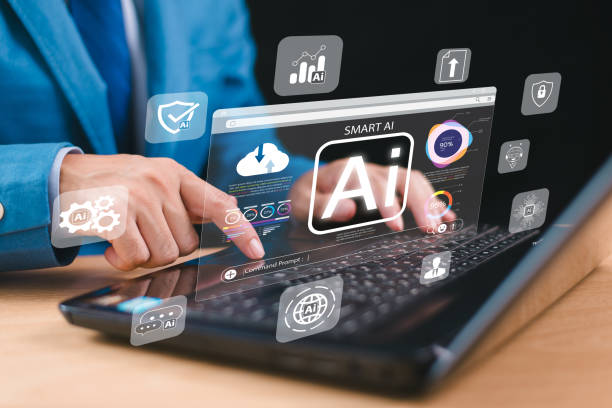
URL structure is another important factor in On-Page SEO.
Your website’s URLs should be short, descriptive, and include keywords.
A good URL helps search engines better understand the page’s content and display it to relevant users.
Avoid using long and complex URLs. Your URLs should be logically organized and reflect your site’s structure.
For example, if you have an e-commerce website, your product URLs should include the product category and product name. Avoid using special characters and spaces in URLs.
Use hyphens (-) instead of spaces. Your URLs should be in English, even if your website’s content is in Persian. Changing URLs can harm your website’s ranking.
Therefore, before changing URLs, make sure you have set up 301 redirects from old URLs to new URLs. In general, a good URL structure can help improve your website’s On-Page SEO and attract more organic traffic to your website.
Using SSL in URLs is considered an SEO advantage.
Image Optimization for On-Page SEO

Image optimization is an important aspect of On-Page SEO that is often overlooked.
Images can improve user experience and enhance the attractiveness of your content, but if not optimized correctly, they can slow down page loading speed and harm your website’s ranking.
To optimize images for On-Page SEO, you need to pay attention to a few points.
First, reduce the size of your images.
Large images can slow down page loading speed and lead to user dissatisfaction.
Use image compression tools to reduce image size without compromising quality. Second, use appropriate file names for your images.
Image file names should be descriptive and include keywords.
For example, instead of using the file name “IMG_1234.jpg”, use the file name “men-sport-shoe.jpg”. Third, use alt tags for your images.
An alt tag is alternative text for images that is displayed if the image fails to load.
The alt tag should be descriptive and include keywords. Fourth, use high-quality images.
Low-quality images can harm your website’s credibility. Fifth, use images relevant to your content.
Images should be relevant to the page’s content and help in better understanding it. Sixth, do not use copyrighted images.
Using copyrighted images can lead to legal issues.
Internal and External Linking and its Impact on On-Page SEO

Internal and external linking are two important SEO strategies that play a significant role in improving your website’s ranking in search results.
Internal linking means creating links between different pages of your website.
Internal linking helps search engines better understand your website’s structure and identify more important pages.
Additionally, internal linking helps users easily navigate your website and find the information they need.
To create effective internal links, you need to pay attention to a few points.
First, the links must be relevant to the page’s content.
Second, the links should point to important pages on your website.
Third, the links should use relevant text (Anchor Text).
External linking means receiving links from other websites.
External links signal to search engines that your website is credible and valuable.
The more external links your website has, the higher the probability of achieving a higher ranking in search results.
To receive external links, you must produce high-quality and valuable content that is worth linking to.
You can also collaborate with other websites and create reciprocal links.
However, you should avoid buying links, as this can harm your website’s ranking.
In On-Page SEO, internal links are of particular importance.
| Link Type | Description | Benefits |
|---|---|---|
| Internal Link | Links between different pages of a website | Improved site structure, increased ranking of important pages, improved user experience |
| External Link | Links from other websites to your website | Increased site authority, improved search ranking, traffic attraction |
Improving Page Load Speed
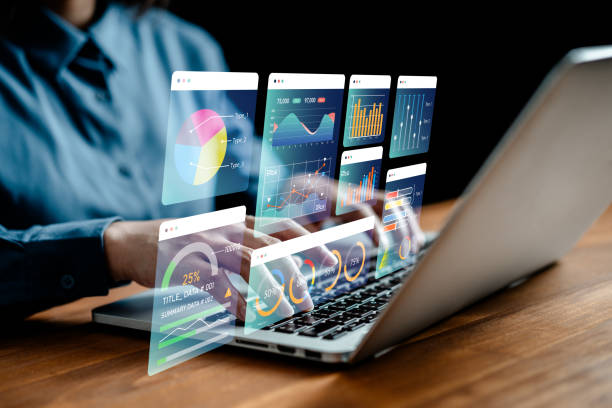
Page load speed is one of the important factors in user experience and On-Page SEO.
Users expect web pages to load quickly, and if a page takes too long to load, there’s a high probability that users will abandon the page and go to another website.
Page load speed significantly impacts your website’s ranking in search results.
Google gives a better ranking to websites with higher loading speeds.
You can use various methods to improve page load speed.
First, reduce the size of your images.
Second, use a CDN (Content Delivery Network).
A CDN is a network of servers that stores your website’s content around the world and selects the closest server for users to load content.
Third, optimize your HTML, CSS, and JavaScript code.
Fourth, use browser caching.
Browser caching allows the browser to store your website’s content in its memory and load the page faster on subsequent visits.
Fifth, use quality hosting.
Quality hosting can significantly increase your website’s loading speed.
Various tools are available to test page load speed, such as Google PageSpeed Insights and GTmetrix.
Are you tired of your e-commerce site having visitors but no sales? Rasaweb solves your core problem with professional e-commerce website design!
✅ Significantly increased sales with targeted design
✅ Seamless user experience for your customers
⚡ Get a free consultation!
Mobile Optimization
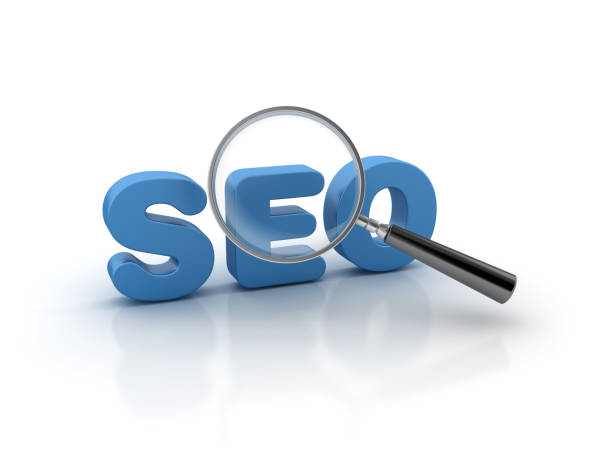
Today, most users access the internet via mobile, so optimizing your website for mobile is one of the necessities of On-Page SEO.
A mobile-friendly website should display correctly on different devices, have a high loading speed, and be easy to use.
Google gives a better ranking to mobile-friendly websites.
You can use various methods to optimize your website for mobile.
First, use a responsive template.
A responsive template automatically adjusts itself to the screen size of the user’s device.
Second, use readable fonts.
Third, use large buttons and links.
Fourth, use optimized images.
Fifth, avoid intrusive pop-ups.
Sixth, optimize page load speed.
Google has a tool called the Mobile-Friendly Test that you can use to check your website’s mobile-friendliness.
On-Page SEO has a significant impact on the mobile version.
Continuous Analysis and Improvement of On-Page SEO

On-Page SEO is an ongoing process, and you should regularly analyze your website’s performance and make necessary changes.
Various tools are available to analyze your website’s performance, such as Google Analytics and Google Search Console.
Google Analytics helps you obtain information about your website’s traffic, such as the number of visitors, bounce rate, and dwell time on the site.
Google Search Console helps you obtain information about your website’s performance in search results, such as the number of clicks, impressions, and average ranking.
Using this information, you can identify your website’s strengths and weaknesses and improve your SEO strategy.
For example, if you notice that your website’s bounce rate is high, you should improve your content and enhance the user experience.
Or if you notice that your website does not rank well for certain keywords, you should optimize your content for those keywords.
On-Page SEO should be continuously reviewed and analyzed.
Frequently Asked Questions
| Question | Answer |
|---|---|
| What is On-Page SEO? | On-Page SEO involves optimizing elements that are directly within your control and on your website. Its goal is to help search engines better understand the page content and improve its ranking. |
| Why is On-Page SEO important? | On-Page SEO provides clear signals to search engines about the page content, improves user experience, and increases the chance of attracting organic traffic. |
| What are the most important On-Page SEO factors? | Keywords, Title Tag, Meta Description, URL structure, quality content, image optimization, and internal links are among the most important factors. |
| What is the role of the Title Tag in On-Page SEO? | The Title Tag is one of the most important signals for search engines and users, defining the main topic of the page. It should include the main keyword and be engaging. |
| How important is the Meta Description? | The Meta Description does not directly affect ranking, but by enticing users to click, it can improve the Click-Through Rate (CTR). |
| How do we optimize images for On-Page SEO? | By using descriptive file names, appropriate Alt Text containing keywords, compression to reduce size, and correct dimensions. |
| What is the impact of Internal Links on SEO? | Internal links help search engines discover and index site pages, distribute authority (PageRank) across the site, and improve user navigation. |
| Is page load speed an On-Page SEO factor? | Yes, page load speed is a critical factor in On-Page SEO and user experience. Slower pages can lead to higher bounce rates and lower rankings. |
| What are the characteristics of quality content for On-Page SEO? | Quality content should be comprehensive, unique, relevant, trustworthy, readable, and fully address users’ needs and questions. |
| How can keywords be used in content? | Keywords should be used naturally in titles, subheadings, the first paragraph, body text, and image alt text. Avoid Keyword Stuffing. |
And other advertising services from Rasaweb Advertising Agency:
- Smart Brand Identity: A combination of creativity and technology to increase sales through precise audience targeting.
- Smart Customer Journey Map: Professional optimization to increase website visits using marketing automation.
- Smart Digital Branding: Exclusive service for growing customer acquisition based on precise audience targeting.
- Smart Direct Marketing: Exclusive service for growing sales based on user experience customization.
- Smart Social Media: A combination of creativity and technology for online growth using real data.
And over hundreds of other services in internet advertising, advertising consultation, and organizational solutions
Internet Advertising | Advertising Strategy | Advertorial
Sources
- Complete Guide to On-Page SEO
- Key On-Page SEO Techniques
- On-Page SEO Checklist for Ranking Improvement
- Effective On-Page SEO Strategies
? Rasaweb Afarin, your strategic partner in the digital world, brings your business to the peak of success by offering innovative marketing solutions and professional e-commerce website design. For a free consultation and to learn more about our services, contact us now. The bright future of your business begins with Rasaweb Afarin.
📍 Tehran, Mirdamad Street, next to Central Bank, Kazeroun Jonoubi Alley, Ramin Alley No. 6

